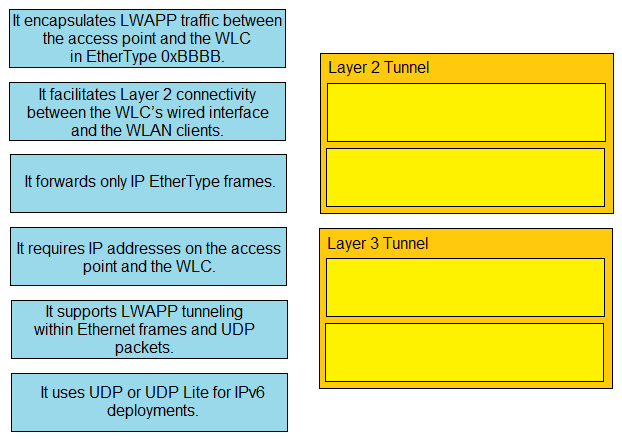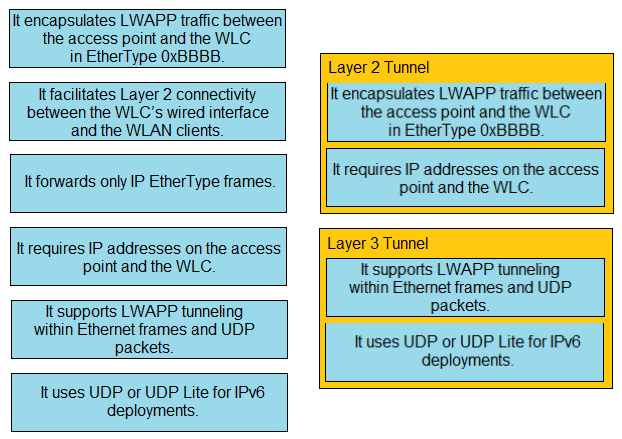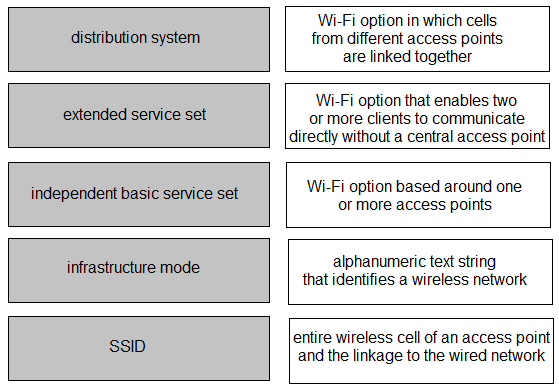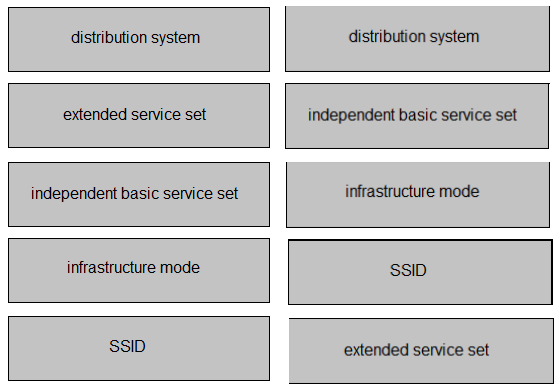What is the path for traffic sent from one user workstation to another workstation on a separate switch in a three-tier architecture model?
D
What is the difference between IPv6 unicast and anycast addressing?
A

Refer to the exhibit. Between which zones do wireless users expect to experience intermittent connectivity?
C
Which WAN topology provides a combination of simplicity quality, and availability?
C
DRAG DROP -
Drag and drop the statements about wireless architectures from the left onto the architectures on the right.
Select and Place:

DRAG DROP -
Drag and drop the Wi-Fi terms from the left onto the descriptions on the right.
Select and Place:

How are the switches in a spine-and-leaf topology interconnected?
B
What is the primary effect of the spanning-tree portfast command?
D
Reference:
https://www.cisco.com/c/en/us/td/docs/switches/lan/catalyst3560/software/release/12-2_55_se/configuration/guide/3560_scg/swstpopt.html
What occurs when PortFast is enabled on an interface that is connected to another switch?
D
Enabling the PortFast feature causes a switch or a trunk port to enter the STP forwarding-state immediately or upon a linkup event, thus bypassing the listening and learning states.
Note: To enable portfast on a trunk port you need the trunk keyword ג€spanning-tree portfast trunkג€
Which QoS Profile is selected in the GUI when configuring a voice over WLAN deployment?
A
Cisco Unified Wireless Network solution WLANs support four levels of QoS: Platinum/Voice, Gold/Video, Silver/Best Effort (default), and Bronze/Background.
Reference:
https://www.cisco.com/c/en/us/td/docs/wireless/controller/7-4/configuration/guides/consolidated/b_cg74_CONSOLIDATED/ b_cg74_CONSOLIDATED_chapter_01010111.html